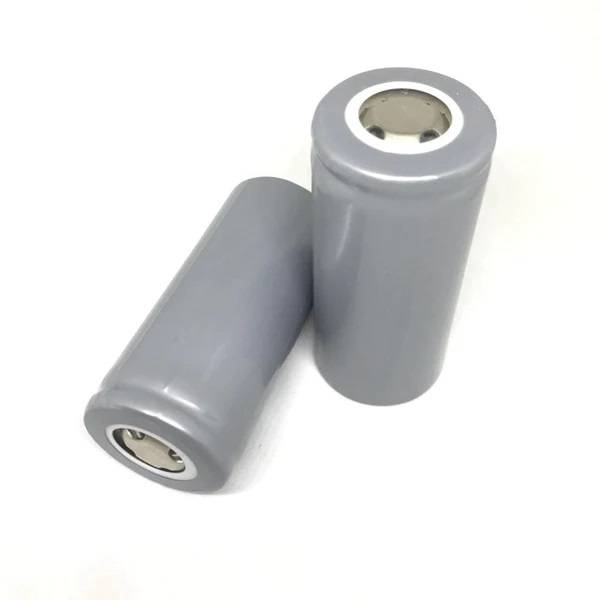Solid-state batteries (SSBs) are emerging as a transformative technology in energy storage, promising higher efficiency, enhanced safety, and longer lifespans compared to traditional lithium-ion batteries. However, several obstacles must be addressed before they can be widely adopted in commercial applications.
What are Solid-State Batteries and How Do They Work?
Solid-state batteries utilize a solid electrolyte instead of a liquid one, allowing for the movement of ions between the anode and cathode during charging and discharging cycles. This structure enhances safety and performance:
- Components: SSBs consist of a solid electrolyte, an anode (often lithium or graphite), and a cathode (typically lithium metal oxides).
- Ion Movement: Ions move through the solid electrolyte during operation, facilitating energy storage and release.
This design minimizes risks associated with liquid electrolytes, such as leakage or flammability.
Chart: Structure of Solid-State Batteries
| Component | Description |
|---|---|
| Anode | Typically made from lithium or graphite |
| Cathode | Often composed of lithium metal oxides |
| Solid Electrolyte | Non-flammable material that conducts ions |
What Promises Do Solid-State Batteries Hold for the Future of Energy Storage?
Solid-state batteries promise several advancements that could revolutionize energy storage:
- Higher Energy Density: SSBs can store more energy in a smaller volume, making them ideal for applications like electric vehicles (EVs) where space is critical.
- Improved Safety: The use of solid electrolytes significantly reduces risks associated with thermal runaway and flammability.
- Longer Lifespan: SSBs typically offer more charge cycles than traditional batteries, leading to lower long-term costs.
These advantages position solid-state technology as a key player in sustainable energy solutions.
Chart: Promises of Solid-State Batteries
| Promise | Impact |
|---|---|
| Higher Energy Density | Enables lighter, more efficient designs |
| Improved Safety | Reduces risk of fires and chemical leaks |
| Longer Lifespan | Decreases replacement frequency |
What Are the Key Advantages of Solid-State Batteries Over Traditional Lithium-Ion Batteries?
Solid-state batteries offer several advantages compared to traditional lithium-ion batteries:
- Energy Efficiency: SSBs have higher charge/discharge efficiency due to lower internal resistance.
- Temperature Tolerance: They perform better across a wider temperature range, enhancing reliability.
- Material Versatility: The potential for using various materials in solid electrolytes can lead to innovations in battery design.
These factors make SSBs particularly attractive for high-performance applications.
What Obstacles Are Hindering the Widespread Adoption of Solid-State Batteries?
Despite their potential, several challenges hinder the widespread adoption of solid-state batteries:
- High Production Costs: The materials and processes required for manufacturing SSBs can be expensive.
- Technical Limitations: Issues such as dendrite formation can lead to short circuits and affect battery performance.
- Market Competition: Established lithium-ion technologies dominate the market, making it difficult for new entrants to gain traction.
Addressing these challenges is crucial for realizing the full potential of solid-state technologies.
Chart: Challenges Facing Solid-State Battery Adoption
| Challenge | Description |
|---|---|
| High Production Costs | Expensive materials and processes |
| Technical Limitations | Dendrite formation leading to short circuits |
| Market Competition | Established lithium-ion technologies dominate |
How is Research and Development Addressing These Challenges?
Research and development efforts are focused on overcoming the obstacles facing solid-state batteries:
- Material Innovation: Researchers are exploring new solid electrolyte materials that enhance conductivity while maintaining safety.
- Manufacturing Techniques: Advances in production methods aim to reduce costs and improve scalability.
- Performance Testing: Rigorous testing protocols help refine battery designs for optimal performance under various conditions.
These R&D initiatives are essential for transitioning from laboratory concepts to commercially viable products.
What Role Do Major Companies Play in Advancing Solid-State Battery Technology?
Major companies are significantly contributing to the advancement of solid-state battery technology:
- Investment in R&D: Companies like Toyota and QuantumScape are investing heavily in research to develop next-generation solid-state batteries.
- Collaborations: Partnerships between manufacturers, research institutions, and governments foster innovation and accelerate development.
- Market Influence: Established companies can leverage their market presence to promote new technologies and drive consumer acceptance.
These efforts create a robust ecosystem that supports technological advancement.
FAQ: Common Questions About Solid-State Batteries
Q1: What is a solid-state battery?
A1: A solid-state battery uses a solid electrolyte instead of a liquid one, enhancing safety, energy density, and lifespan compared to traditional batteries.Q2: Why are solid-state batteries considered safer?
A2: The absence of flammable liquid electrolytes significantly reduces risks associated with fires and thermal runaway.Q3: What challenges does the industry face?
A3: Key challenges include high production costs, technical limitations like dendrite formation, and competition from established lithium-ion technologies.
Industrial News: Recent Developments in Solid-State Battery Technology
Recent developments indicate significant progress in solid-state battery technology. Companies like QuantumScape have announced breakthroughs in their prototypes, showcasing improved performance metrics that could revolutionize electric vehicle capabilities. Additionally, government funding initiatives across Europe and North America aim to accelerate research into scalable production techniques for solid-state batteries. These advancements highlight a growing commitment to integrating this technology into mainstream applications.
Redway Expert Insights
“Solid-state batteries represent a transformative leap forward in energy storage technology,” states Dr. Emily Chen, an expert in battery research. “As leading companies invest heavily in R&D and collaborate with academic institutions, we can expect significant advancements that will not only enhance electric vehicle performance but also support broader renewable energy goals.”



